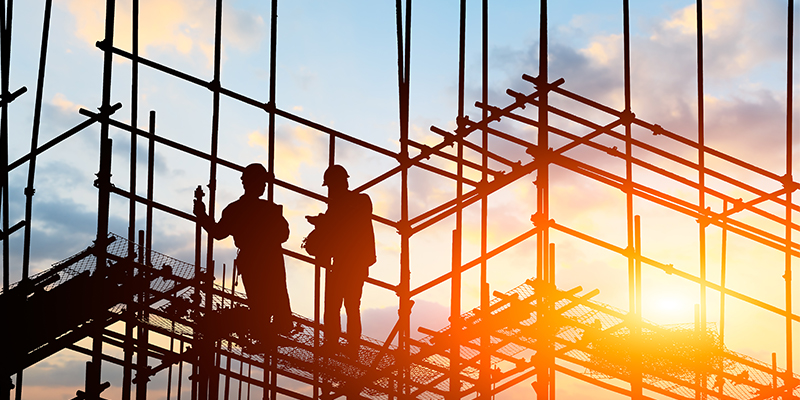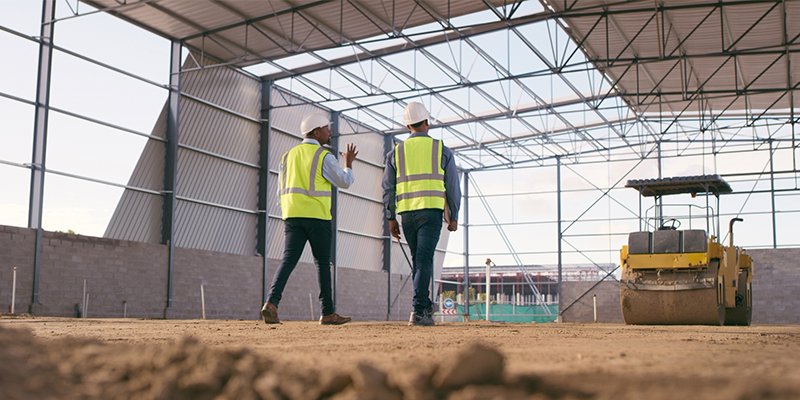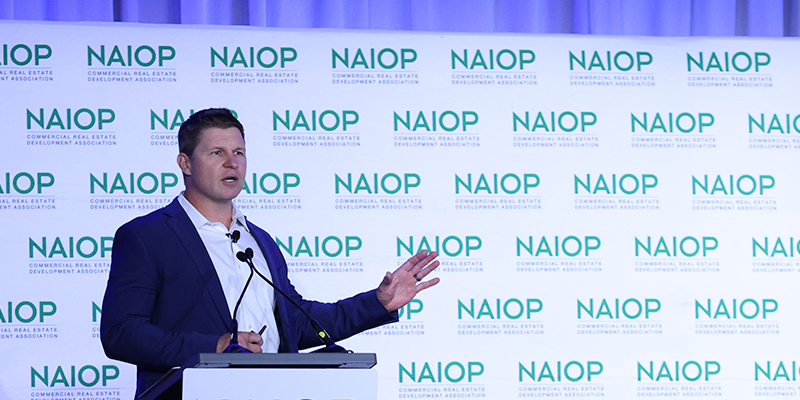Despite the severe economic downturn of 2020, the U.S. construction industry grew. Direct expenditures for building and nonbuilding construction climbed $51.7 billion to reach $1.4 billion for the year. Total jobs supported by construction grew by 400,000. And construction’s percentage of total U.S. GDP rose from 19.5% in 2019 to 21% in 2020.
In the annual NAIOP Research Foundation study, “Economic Impacts of Commercial Real Estate,” Stephen S. Fuller, Ph.D., university professor emeritus, Schar School of Policy and Government at George Mason University, detailed construction activity and impact across real estate sectors, analyzed factors impacting growth rates and argued that robust support of construction activity in commercial real estate and other sectors could drive America’s economic recovery.
In researching this report, what stood out to you as a surprising finding?
SF: My biggest surprise was that residential performed so strongly and gained strength over the course of the year. But interest rates were at historic lows, millennials had begun to have families, and they were having to isolate and work at home. For many people living in small places, it was time to make a decision on housing, so the residential market was strong. It grew in dollar terms and pulled the construction industry up with it.
Other real estate sectors – office, manufacturing, warehouse and retail – were impacted somewhat differently depending on how much their economy was disrupted. Those economic patterns were already present in recent years and they were accelerated by the pandemic. Manufacturing and retail were already negative before 2020, and office had been soft because the sector has maintained a big vacancy rate.
Going forward, I think the shift in office space, retail and maybe manufacturing will be a greater emphasis on renovation, modernization and redesign – rethinking our space utilization.
What do you expect to happen with office construction or renovation in 2021?
SF: There isn’t great demand for new, high-end space. In Washington, D.C., for example, several very large, almost iconic projects have been cancelled. But I think there will be a continuing demand for new, modern office space. The overall economy is on a path to recovery and more of our work is done in office settings. In markets that are tighter for Class A and B space, companies will build office buildings this year and next. I think we are going to make better use of existing office space, and companies that are trying to recover lost revenues will be more thoughtful about what kind of office space they want. Also, we could certainly see a lot of office renovation focused on assuring sufficient social distancing in the workplace. I think the office market, like retail, has seen a sea change that is going to alter demand patterns this decade. This is not a short-term trend.
In the report, you describe warehouse construction as a bright spot in 2020. How do you see that sector performing in the next few years?
SF: Realistically, I think they have gotten a little ahead of themselves. You can throw up warehouses pretty quickly, the cost per square foot is quite modest and they go into industrial districts, so it’s relatively easy to get permits. I think that sector will continue to grow but I don’t think the growth will accelerate in the short term. Also, retail centers and big box stores will see the return of more in-person shoppers this year as more people get vaccinated, and that might impact the growth of e-commerce.
The report shows how the square-foot cost of building manufacturing space has significantly increased in recent years. What does that mean for CRE companies that are looking to meet the needs of manufacturers?
SF: The data we rely on for that analysis are annual and lumpy. These data can be easily distorted by a very capital-intensive project, such as when Elon Musk built his new battery factory in Nevada. That’s quite different from a manufacturing plant where you build cabinets or furniture. So from one year to the next, these numbers change due to what is being built and it can be inconsistent from year to year.
But that said, the kind of manufacturing that seems to be growing and seems to work well in the U.S. is capital intensive. There is a lot of equipment and robotics that go into those factories. An auto-assembly plant is not dirty; it looks like they could bake bread in those places and eat it off the floor. That dramatic application of technology is what we are really good at in this country. These are often smaller buildings, but a purpose-built manufacturing building may need a different kind of foundation, sanitation and electrical services.
I don’t see a groundswell of new manufacturing. What I think we are going to see is the manufacturing of new specialized products, certainly in pharmaceuticals such as local vaccine production. That’s another positive trend that may have been accelerated by the pandemic.
Construction activity is a big driver of the economy. If you could speak directly to federal, state and local legislators, what would you recommend they look at doing to boost commercial real estate construction and, consequently, strengthen the economy?
SF: Of all sectors across the economy, the construction multiplier is the fifth largest so it is really significant. Construction is more integrated into the economy than most other industries so it generates economic benefits for many, many more people than the people you see working on construction sites.
It is also a sector that tends to grow faster than the economy. It is a leading sector. We saw that in the Great Recession. Once the construction industry got going, it just pulled the economy along with it. The construction industry didn’t start to recover until April 2011. But between 2011 and the downturn in 2020, it outperformed the U.S. economy by almost 50%. Without that level of growth, the overall economy wouldn’t have performed as well.
So the message is if we want to get this economy to recover fully and to get back to pre-pandemic economic growth patterns, we need to accelerate construction. At the local level, the biggest complaint is the regulatory environment affecting construction is burdensome and it is slow. Accelerating hearings, reviews and the regulatory process is imperative to get construction projects underway.
Local, state and federal spending for public infrastructure is critical, so the funds for state and local government in the current legislation for COVID relief are going to be very important. An infrastructure program at the federal level is also really important. It is overdue for various reasons and it would be very timely now because it would help jumpstart the economy.








